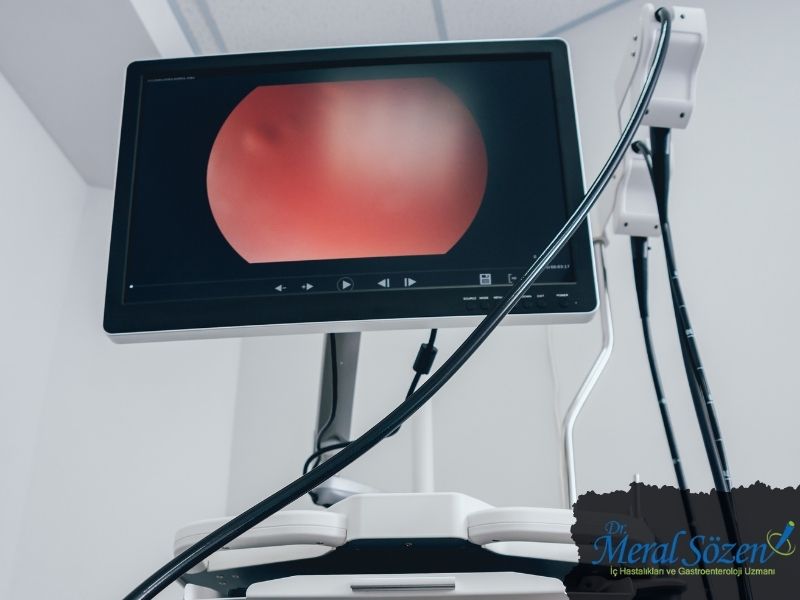Endoskopi Ankara; ucunda kamera bulunan yaklaşık 1 metre boyunda bir cihaz ila ağızdan gönderilerek yemek borusu, mide ve on iki parmak bağırsağın incelenmesini sağlayan bir yöntemdir. Söz konusu organlarda herhangi bir hastalıktan şüphelenildiği durumlarda uygulanan endoskopi işleminin birden fazla çeşidi bulunmaktadır.
Endoskopi Ankara Nedir?
Endoskopi aynı zamanda Gastroskopi olarak da tanımlanmaktadır ve endoskop adı verilen cihazın ağızdan yemek borusu, mide ve on iki parmak bağırsağının başlangıç noktasına gönderilen kamera ile bu bölgelerin incelenmesi işlemidir. Aynı zamanda söz konusu organlarda kanama olması durumunda müdahale edilebilmekte, polip bulunuyorsa polip alınabilmekte ve kanser şüphesinin bulunması durumunda işlem sırasında parça alınabilmektedir.
Son yıllarda endoskopi cihazları oldukça gelişmiştir ve hasta açısından çok daha konforlu hale gelmiştir. Aynı zamanda hastanın herhangi bir şey hissetmemesi amacı ile sedasyon altında da uygulanabilmektedir.

Endoskopi Neden Yapılır?
Endoskopi işlemi; mide içinde, yemek borusunda ya da bağırsakta yara şüphesinde, mide kalınlaşması şüphesinde, aile öyküsünde kanser bulunmasında ya da ülser hastalığı varlığında uygulanmaktadır. Aynı zamanda hastada kronikleşmiş birtakım şikayetlerin varlığında da hekiminiz endoskopi incelemesine ihtiyaç duyabilmektedir. Söz konusu şikayetler aşağıdaki şekilde sıralanabilmektedir;
- İshal
- Mide ağrısı
- Bulantı ve kusma
- Yutmada güçlük
- Reflü
- Spor ya da diyet yapılmadığı halde kilo kaybı
- Ağız kokusu
- Göğüs ağrısı
Endoskopi işlemi mide, yemek borusu ve bağırsak hastalıklarının tanısında son yıllarda altın standart haline gelmiştir.
Endoskopi Nasıl Yapılır?
Endoskopi işlemi sedasyon altında ya da boğaz bölgesine uygulanan uyuşturucu bir sprey sonrasında ağızdan endoskop cihazı gönderilerek uygulanır. İşlemden önce 8 saat boyunca hasta herhangi bir besin tüketmemelidir ve aç olmalıdır. İşlem sırasında hasta sol yanına yatırılır ve özel ağızlık takılmaktadır. İşlem süresince hastanın kalp atışları, oksijen durumu ve tansiyonu kontrol edilir. işlem 5 ila 10 dakika arasında sürmektedir ve hasta bu süreçte acı ya da ağrı duymamakla birlikte işlem sonrasında günlük yaşamına devam edebilmektedir.
Endoskopi Ne Kadar Sürer?
Endoskopi işlemi hastaların çoğunda anestezi uygulaması ile birlikte gerçekleştirilmektedir. 5 ila 10 dakika süren işlem sonrasında hasta uyanmaktadır ve herhangi bir acı ya da ağrı hissetmemesi sağlanmaktadır. Gerektiği durumlarda parça alınabilmekte ya da kanama varlığında bu probleme de müdahale edilebilmektedir. İşlem sonrasında hasta günlük yaşamına devam edebilmektedir.
Ankara Endoskopi Doktoru Tavsiye
Ankara endoskopi doktoru tavsiyesi pek çok hasta tarafından aranmaktadır. Hastalık sürecinin takibini uygulayan hekimin endoskopi işlemine ihtiyaç duyması ile endoskopi yapan kurumlar ve hastaneler araştırılmaktadır. Ankara’da endoskopi işlemi sterilizasyonu tamamlanmış sağlık kurumlarında güvenilir bir şekilde uygulanabilmektedir.
Ankara Endoskopi Fiyatları
Ankara Endoskopi fiyatları; endoskopinin türüne, işlem sırasında uygulanacak ek uygulamalara (polip alınması, parça alınması) göre değişkenlik gösterebilmektedir.





